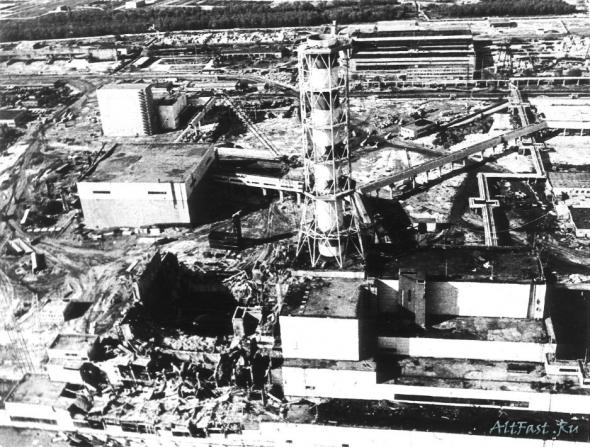
Черно́быльская катастро́фа [the Chernobyl disaster] occurred on April 26, 1986 на Черно́быльской А́томной Электроста́нции [at the Chernobyl Nuclear Power Plant] in a small town of Черно́быль [Chernobyl] located in northern Ukraine, near the border with Belarus. The worst hit regions were Белару́сь [Belarus], Украи́на [Ukraine] and Росси́я [Russia]. According to official post-Soviet data, about 60% of the the residual radiation hazard from the nuclear explosion landed in Belarus.
On April 26, 1986, сове́тские лю́ди [Soviet people] didn’t know anything about the Chernobyl disaster. They didn’t know anything about it on April 27 and 28. Пе́рвый сигна́л [the first warning] came from Sweden at 9 a.m on Monday, April 28.
Finally, at 9:00 p.m. on Monday, April 28, ди́ктор [a TV newscaster] on Moscow television read a four-sentence statement from the Council of Ministers to the Soviet people: ”An accident has taken place at the Chernobyl power station, and one of the reactors was damaged. Measures are being taken to eliminate the consequences of the accident. Those affected by it are being given assistance. A government commission has been set up.” Then the announcer seemingly calmly picked up a different piece of paper and went on to discuss a story about a Soviet peace fund.
Needless to say, большинство́ люде́й [most people] were not alarmed by this news. People continued their preparations for the May Day parade, which celebrates the International Workers’ Day. Parading the streets with balloons, slogan posters and banners, some взро́слые [adults] and де́ти [children] fainted blaming the hot weather, while others kept marching on. Some years later, my учи́тель фи́зики [physics teacher] told us интере́сную исто́рию [an interesting story]. In April of 1986, she was introducing her students to the Geiger counter, a type of a particle detector that measures ionizing radiation. When she turned счётчик Ге́йгера [the Geiger counter] on, the device went off-scale. Of course, she didn’t think я́дерный взры́в [the nuclear explosion] took place somewhere. She simply thought the device wasn’t working properly. Little did she know. Little did we all know.
Today, 25 лет спустя́ [25 years later], we are still not over this horrific disaster. There are many empty towns and villages, there are thousands of empty homes, and there are tens of thousands lost lives. As a result я́дерного взры́ва [of the nuclear explosion], presently there is a large increase in the incidence of thyroid cancer among people who were children and adolescents at the time of the accident. Furthermore, an increased number of cancer deaths can be expected during the lifetime of people exposed to radiation from the accident. It should be noted that Chernobyl caused low radiation doses spread over a long time period.
Here is a film about Черно́быль [Chernobyl] by a Ukrainian filmmaker Volodimir Mikitovich Shevchenko. Volodimir died just several weeks after filming it. The phrase “Черно́быль – после́дний фильм, после́дний вздох мой” [“Chernobyl – my last film, my last breath”] is engraved on his tombstone.
The image in this post is from chernobil.info
0 Comments
Add comment
Leave a Reply
You must be logged in to post a comment.




